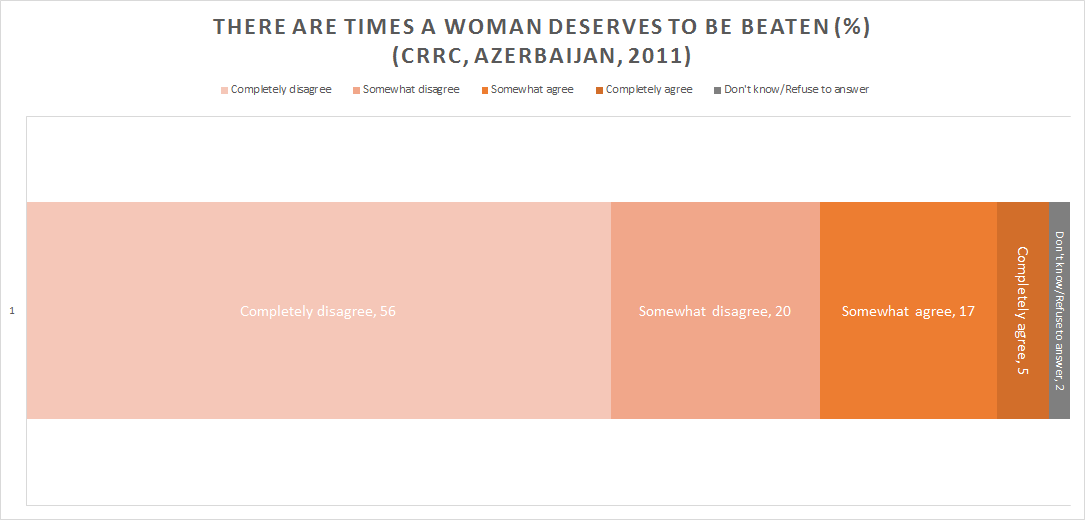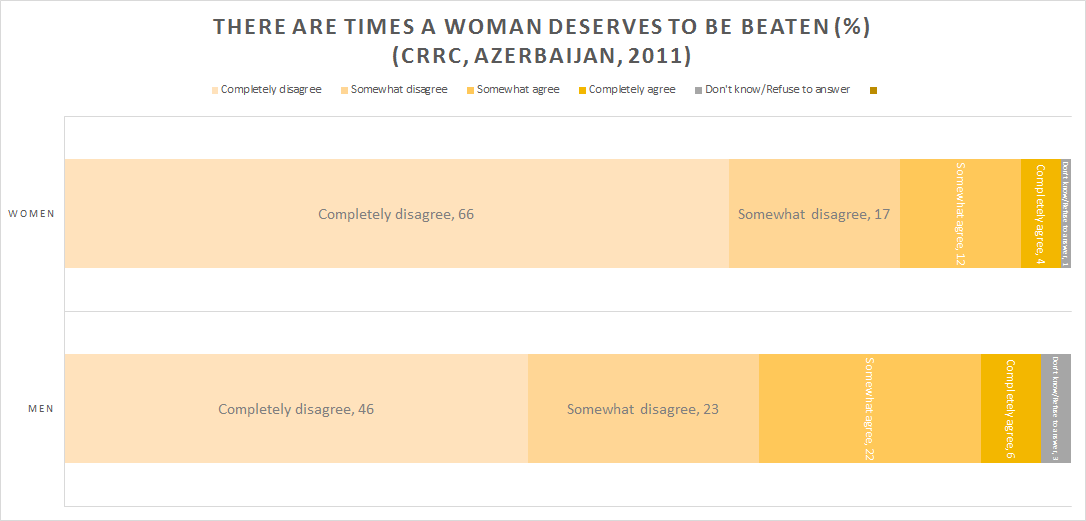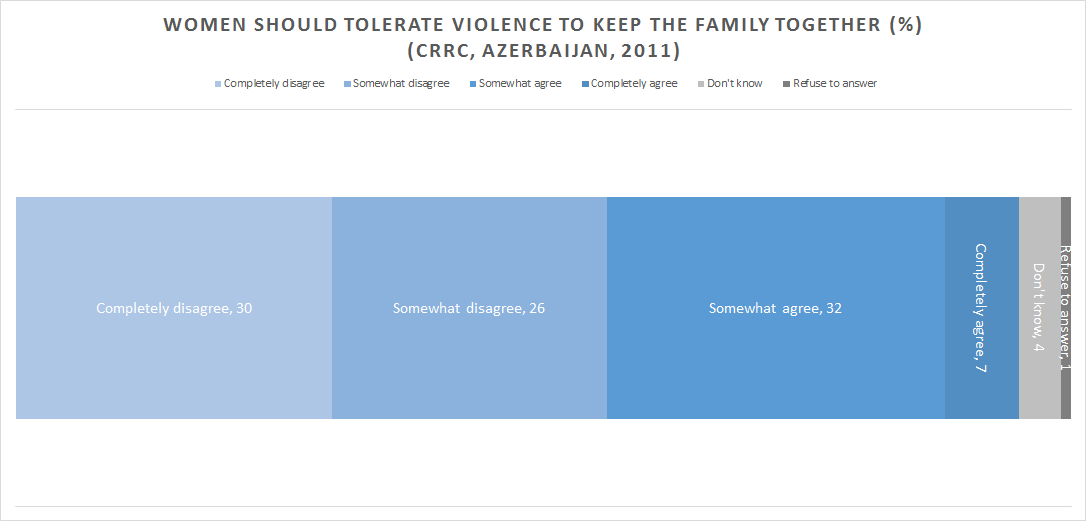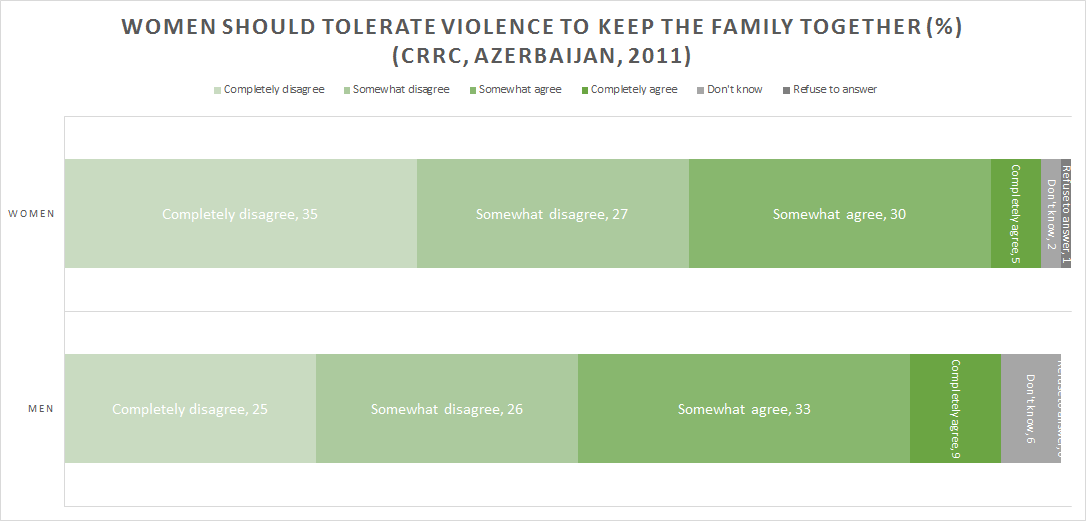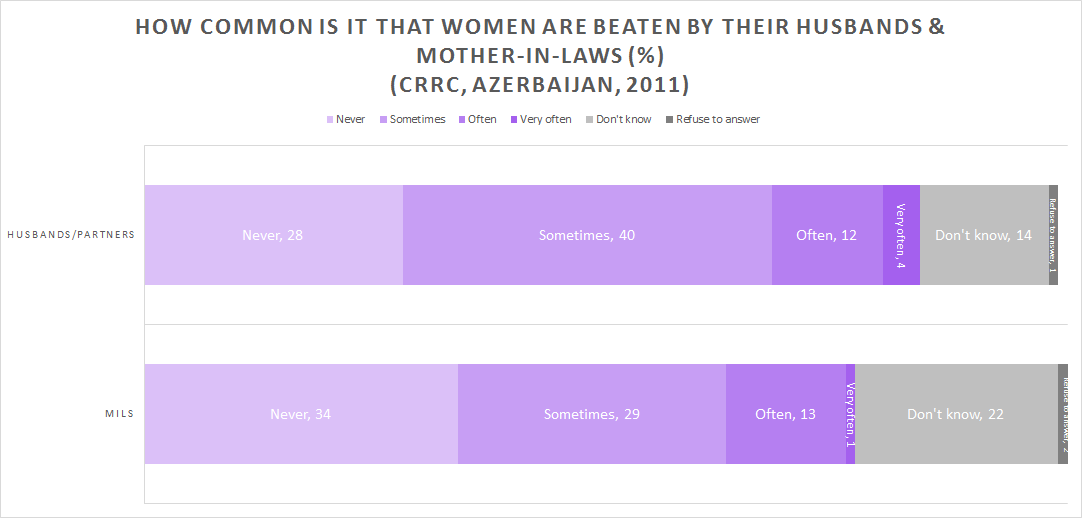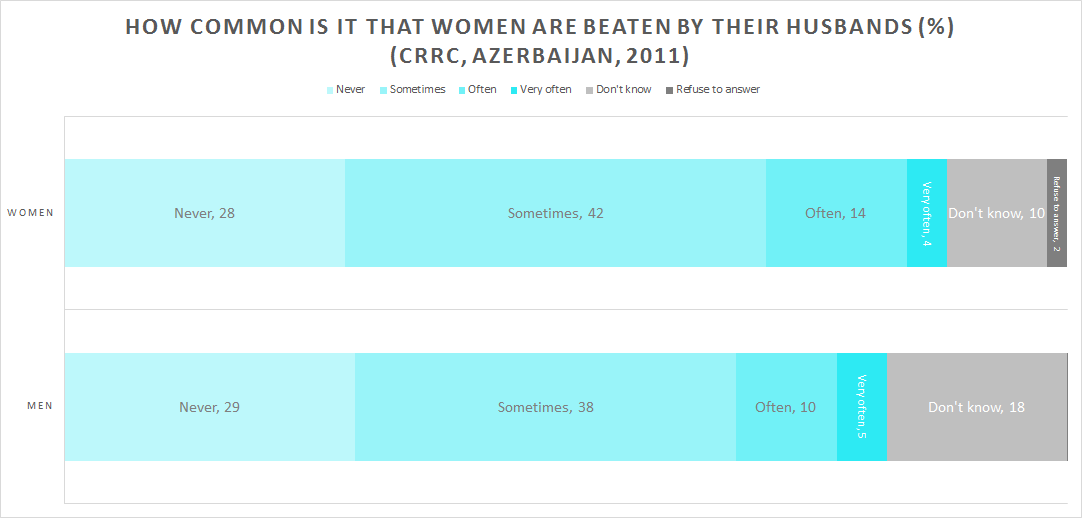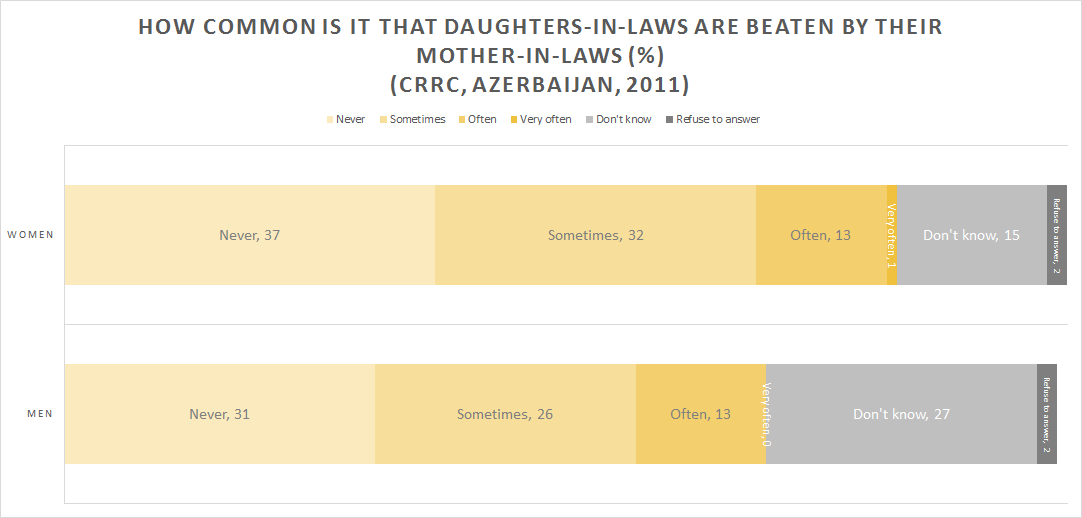Frequency of using the Internet and social media as an information source in Eurasia, 2015
The EBRD Life in Transition survey changed their wording on this question quite a bit this wave, so it is difficult to compare to the past. But here I present the frequency of Eurasians using the Internet and social media as an information source. The question says: “People use different sources to learn what is going on in their country and the world. For each of the following sources, please indicate how often you use it:” with a variety of choices from never to daily.
This is Internet
and social media
It is hard to say if people understood the difference between the Internet and social media. I’d guess that they did not. I eyeball’d the crosstabs and it seems that the nevers in both groups are pretty heavily overlapping.
And, of course, anyone that knows anything about media consumption knows that the vast majority of people get their news from TV. Nonetheless, I wanted to also provide a bit of context for the South Caucasus, Russia, and Turkey. If you’re interested in other countries, please contact me.
More to come!




